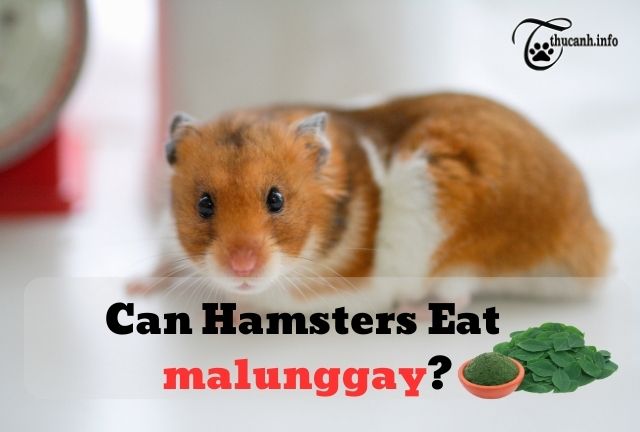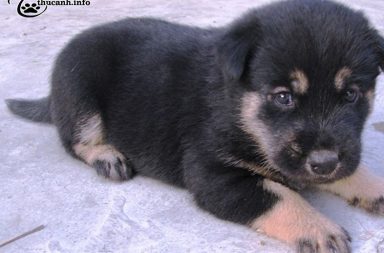If you’re a loving hamster owner, you probably want to provide your furry friend with the best possible diet to ensure their health and well-being. So can Hamsters eat malunggay? In this comprehensive guide, we will explore the nutritional benefits, potential risks, and safe serving methods of malunggay for hamsters.

Can Hamsters Eat safely Malunggay?
1. What is Malunggay? Can Hamsters Eat Malunggay?
Malunggay, scientifically known as Moringa oleifera, is a versatile and nutrient-rich plant that has been revered for its medicinal properties and nutritional benefits. Commonly referred to as the “Miracle Tree” or “Drumstick Tree,” malunggay is native to South Asia but has gained popularity worldwide due to its remarkable health attributes. Its leaves, fruits, flowers, seeds, and roots are all utilized for various purposes, making it a valuable plant in traditional medicine and culinary practices.
So, Can Hamsters Eat Malunggay?
The short answer is No, hamsters should not eat malunggay as a regular part of their diet. While malunggay is a highly nutritious plant with beneficial properties for humans, it is not a typical food that hamsters would consume in the wild. Hamsters have sensitive digestive systems, and introducing new foods can potentially lead to gastrointestinal issues, such as bloating or diarrhea.
2. Potential Risks of Feeding Malunggay to Hamsters
Although Malunggay is a nutritional powerhouse, containing essential nutrients such as vitamin A, vitamin C, calcium, potassium, and iron, it may also carry some risks for hamsters. High consumption of malunggay can lead to digestive issues and upset stomach in some hamsters. To ensure your pet’s safety, it’s crucial to introduce malunggay in moderation and observe their reaction closely.
3. How to prepare malunggay for your hamster

How to prepare malunggay and determine the safe serving size for your furry friend
When offering malunggay as an occasional treat to your hamster, it’s essential to serve the appropriate portion size to prevent any potential health issues. Here’s a guide on how to prepare malunggay and determine the safe serving size for your furry friend:
- Wash Thoroughly: Before serving malunggay to your hamster, make sure to wash the leaves thoroughly under running water. This step helps remove any dirt, pesticides, or residues that might be harmful to your pet.
- Trim the Leaves: Trim the malunggay leaves to bite-sized pieces suitable for your hamster’s tiny mouth. Avoid giving your hamster large pieces of malunggay, as they may struggle to chew or swallow them properly.
- Introduce Gradually: If it’s the first time your hamster is trying malunggay, introduce it gradually and observe their reaction. Start with a small piece and monitor how they respond. If there are no adverse effects, you can continue to offer malunggay as an occasional treat.
- Moderation is Key: While malunggay is rich in nutrients, it should only be given to your hamster in moderation. As with any new food, overfeeding malunggay can upset your hamster’s delicate digestive system. Stick to small portions and provide variety in their diet to maintain a balanced and healthy intake of nutrients.
- Monitor for Allergies: Some hamsters may be allergic to certain foods, including malunggay. Keep a close eye on your pet after introducing malunggay to ensure they don’t experience any allergic reactions. If you notice any unusual behavior or symptoms, such as itchiness, sneezing, or swelling, discontinue offering malunggay immediately and consult a veterinarian.
- Rotate Treats: To avoid any potential nutritional imbalances, it’s essential to rotate the treats you offer your hamster. Malunggay can be part of a variety of occasional treats alongside other safe options like fresh fruits, vegetables, nuts, and seeds.
4. Introducing Malunggay into Your Hamster’s Diet
Transitioning your hamster to a new food can be a gradual process to ensure their comfort and well-being. Follow these tips and tricks to smoothly incorporate malunggay into your hamster’s diet:
- Start with Small Portions: When introducing malunggay to your hamster, begin with small portions. Offer a tiny piece of malunggay alongside their regular food to see how they respond. Slowly increase the amount if they show interest and tolerate it well.
- Mix with Familiar Foods: Mix malunggay with your hamster’s favorite foods to make it more appealing. By combining malunggay with familiar flavors, your hamster may be more willing to try this new treat.
- Monitor their Reaction: Observe your hamster closely after introducing malunggay. Look for any signs of discomfort, allergies, or digestive issues. If your hamster doesn’t show interest in malunggay or has adverse reactions, discontinue feeding it and try other safe treats instead.

Transitioning your hamster to a new food can be a gradual process to ensure their comfort
- Be Patient: Some hamsters may take time to accept new foods. Be patient and persistent in offering malunggay as a treat. It may require several attempts before your hamster develops a taste for it.
- Limit Quantity: While malunggay is nutritious, moderation is key. Avoid overfeeding malunggay or any other treats to prevent digestive problems and nutritional imbalances.
5. Alternatives to Malunggay for Hamsters
If malunggay isn’t suitable for your hamster or they simply don’t enjoy it, don’t worry! There are plenty of other safe and nutritious food options that your furry friend will love. Consider adding the following alternatives to your hamster’s diet:
- Fresh Fruits: Offer small portions of fruits such as apples, pears, blueberries, and strawberries. Remember to remove any seeds or pits and wash the fruits thoroughly before serving.
- Vegetables: Incorporate vegetables like carrots, broccoli, cucumber, and bell peppers into your hamster’s diet. These provide essential vitamins and minerals.
- Nuts and Seeds: Treat your hamster to occasional nuts and seeds like almonds, sunflower seeds, and pumpkin seeds. These offer healthy fats and proteins.
- Cooked Grains: Cooked grains like rice, quinoa, and oatmeal can be delightful and easily digestible options for your hamster.
- Commercial Hamster Foods: Opt for high-quality commercial hamster foods that are specifically formulated to meet their nutritional needs. These foods ensure a balanced diet for your pet.
Remember that variety is essential in your hamster’s diet. Rotate different treats to keep them interested and ensure they receive a wide range of nutrients. Always prioritize your hamster’s health and well-being when selecting food options. If you have any concerns about your hamster’s diet, consult with a veterinarian for personalized advice and recommendations.
Conclusion
In conclusion, can Hamsters eat malunggay? Malunggay is undeniably a nutritional treasure for humans, but when it comes to our hamster companions, we must approach this superfood with caution. While hamsters can eat malunggay in small amounts as an occasional treat, it is not a staple food in their diet. Moderation and monitoring your pet’s response are crucial to ensure their well-being. As responsible hamster owners, we must always prioritize our pets’ health and happiness, and that includes making informed choices about their diet.
Source: thucanh.info


